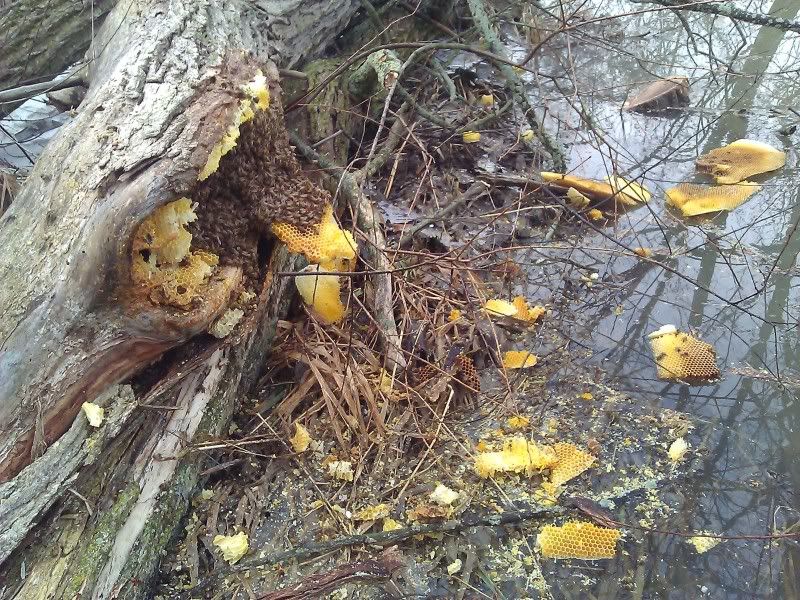tex
ArboristSite Operative
Yeah, I'd say so. Good luck, keep us all posted.

I appreciate that Jeff and will keep it in mind. I've got a bunch of friends, and a totally capable brother, but not many want to help a guy out for free ya know? There's gotta be something in it for them. I buy them breakfast, lunch and beer at the end of the day. Guess it's not enough anymore...
I plan on going back tomorrow for a couple more hours of cutting. I'll take some more pics :msp_thumbup:
I have a question about your friends whole project here in general, maybe you will know the answer maybe not but I was just curious. You said they were pulling the fields out of CRP and planning on tiling the fields, why are they pulling the stumps out of the ground that are growing right on the ditch bank? Seems this will cause quite a bit of erosion and lost of bank stabilization (the main reason for CRP), I work in the conservation field and would be concerned with pulling all these stumps out of a waterway. Why not just cut the stumps flush to the ground and kill them with herbicide? Means more firewood for you too and maybe easier work?
Not trying to pry but was interested in your project (I hate to see any open space plowed up for field crops, but that's a conversation for another day).
If you look at the first few pics of the ditch you can see how steep the banks are. When these ditches flood. (and they do quite often) the water will eventually undermine the stumps and the stump will come loose and hang up downstream somewhere and cause a jam.
They will remove the stumps and cut the banks back in a real wide "V" instead of the narrow "U" that it is now. The ideal bank is a 3 to 1 (3 feet back for every foot of rise) but usually about a 2 to 1 is adequate. Once the ditch is cut back they will plant a deep rooting grass along the banks.
After this the farmer will usually leave about 30' of the top on both sides untilled and planted with grass to stop silt runoff.
Ditches done this way will flow better. Hold up longer and retain their grade much better.
I was hired by my county to do this to a lot of ditches. To bad my county does this all in house now versus subcontracting out. It was fun work.









This is the option of choice here as well AIM, looking back at the pictures those banks are cut very steep, it's good to know that conservation practices are being installed. I look forward to watching this project evolve. I do a lot of similar work here for the county conservation district, we just finished a creek restoration on about 3 miles of stream, it's amazing how much better they look and function now.
Hopefully that 026 is up and running!
I have a question about your friends whole project here in general, maybe you will know the answer maybe not but I was just curious. You said they were pulling the fields out of CRP and planning on tiling the fields, why are they pulling the stumps out of the ground that are growing right on the ditch bank? Seems this will cause quite a bit of erosion and lost of bank stabilization (the main reason for CRP), I work in the conservation field and would be concerned with pulling all these stumps out of a waterway. Why not just cut the stumps flush to the ground and kill them with herbicide? Means more firewood for you too and maybe easier work?
Not trying to pry but was interested in your project (I hate to see any open space plowed up for field crops, but that's a conversation for another day).
You guys must have different CRP (crop reduction program) programs than I have ever heard of before. They started the CRP program many years ago to help farmers bring the price of grain, hay, whatever crop up, so the farmers could make better money. The gov would pay the farmer to not farm that chunk of land for X many years, thus reducing the supply of say grain, and thus increasing the cost of that crop, less supply same demand. However this program has never worked due to the farmers being so dam greedy they ended up screwing themselves in a way, but at taxpayers expense. Farmer Brown would put 1000 acres into CRP, getting paid for nothing, then would just go down the road a little, buy another 1000 acres of land and plant it in whatever crop he was going to plant on the CRP acres to begin with, so no change in supply and demand. Basically taxpayers are buying these farmers more land for free, so guess good deal for them, bad deal for us. The funny part is now they are complaining about how little their crops are worth, lol
I have had a few connections with farmers wanting trees cut and some decent sized ones too, but never a project that big. Any idea how many cords of wood you are going to pull out of there? Just curious....and jealous.
A BUNCH!!!!!!!! :smile2:
I've had a few people recommend that I only drop a few trees at a time, buck them up and go on. I simply do not have the time to do a few, get them out and keep going.
:msp_thumbup:
